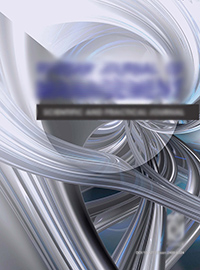the paper raises questions about the search for the possibility of obtaining a construction ceramic material using a special type of raw material component. Diopside concentrate was chosen as the basis for the ceram-ic masses due to its positive parameters necessary to improve the strength properties of the material and to support local deposits of raw materials in the East Siberian region. To reduce the optimal firing temperature, an aqueous-alkaline solution of sodium silicate was used in small quantities. The chemical composition of the diopside rock showed mainly the presence of silicon oxides. X-ray diffraction analysis revealed the presence of diopside, quartz and calcite. Sodium-silicate glass is characterized by a full content of silica and a modulus of 3. Using the state diagram of three-component systems, the temperature limits necessary for sintering ceramic masses are established. The fusibility curves show that at a temperature of 1040oC, the values of the primary melt for various compositions are 4-14%, and the total melt content is observed at 1475oC. The parameters of physical and mechanical properties of the ceramic material were determined, where at the firing temperature of 1000-1100oC the value of fire shrinkage was no more than 1%, water ab-sorption up to 10%, and compressive strength up to 31 MPa. Moreover, with an increase in the amount of diopside to 90% by weight, the strength increases, and shrinkage decreases. X-ray phase analysis of the compositions determined mainly analytical lines of diopside, which begin to decrease by 1000oC, which de-termines the relationship with the liquid glass. The DTA and TG curves of the thermogram showed endo-thermic and exothermic effects due to the release of adsorbed water and crystallization of glass. The possi-bility of obtaining high-strength low-shrink ceramics using diopside raw materials as the basis of ceramic masses when adding sodium-silicate glass in the form of a melt is established.
building material, diopside concentrate, sodium silicate glass
1. Poznjak A.I., Levickij I.A., Baranceva S.E. O povyshenii mehanicheskoj prochnosti keramicheskih plitok na stadijah pressovanija i sushki. Tehnika i tehnologija silikatov. 2014. 21 (1). P. 2 - 6. (rus.)
2. Salahov A.M., Morozov V.P., Tuktarova G.R. Sovershenstvovanie tehnologii stroitel'noj keramiki i rasshirenie nomenklatury izdelij. Steklo i keramika. 2005. 3. P. 18 - 21. (rus.)
3. Adylov G.T. Perspektivy rasshirenija syr'evoj bazy dlja keramicheskogo proizvodstva. Steklo i keramika. 2010. 2. P. 29 - 31. (rus.)
4. Shil'cina A.D., Vereshhagin V.I., Selivanov Ju.V., Korol'kov N.N. Vybor komponentov keramicheskih mass s uchetom fazovo-mineral'nogo sostava i termofizicheskih harakteristik. Stroitel'nye materialy. 2007. 9. P. 7 - 10. (rus.)
5. Vereshhagin V.I., Mogilevskaja N.V. Perspektivy razvitija promyshlennosti tonkoj i stroitel'noj keramiki. Regional'nye proizvoditeli: ih mesto na sovremennom rynke tovarov i uslug: Materialy 3 Mezhre-gion. nauch.-prakt. konf. Krasnojarsk, 2007. P. 7 - 9. (rus.)
6. Vereshhagin V.I., Mogilevskaja N.V., Gorbachev D.V. Farfor nizkotemperaturnogo obzhiga s dobav-kami diopsida i marshalita. Steklo i keramika. 2012. 12. P. 12 - 16. (rus.)
7. Vereshhagin V.I., Men'shikova V.K. Oblicovochnaja stroitel'naja keramika na osnove diopsid. Vestnik Tomskogo gosudarstvennogo arhitekturno-stroitel'nogo universiteta RU-ToGUA. 2011. 3. P. 145 - 152. (rus.)
8. Poznjak A.I., Levickij I.A., Baranceva S.E. Poluchenie plitok dlja vnutrennej oblicovki sten na osnove mestnogo syr'ja. Steklo i keramika. 2012. 3. P. 3 - 7. (rus.)
9. Vereshchagin V.I., Buruchenko A.E., Menshikova V.K., Mogilevskaya N.V. Ceramic materials based on diopside. Glass and Ceramics. 2011. 67 (11-12). P. 343 - 346.
10. Buruchenko A.E., Men'shikova V.K. Primenenie novogo sovremennogo vida syr'ja v proizvodstve keramicheskoj plitki. Sovremennye materialy, tehnika i tehnologija: materialy 4-j Mezhdunar. nauch.-praktich. konf. (25-26 dekabrja 2014 goda). redkol. A.A. Gorohov; Jugo-Zap.gos. un-t, ZAO «Universi-tetskaja kniga». Kursk. 2014. P. 102 - 104. (rus.)
11. Borovkova N.N. Primenenie neobogashhennogo vollastonita dlja oblicovochnyh plitok. Steklo i keramika. 1979. 11. P. 15. (rus.)
12. Beshencev V.D. Vozmozhnosti ispol'zovanija diopsidovogo syr'ja v jelektrotehnicheskoj promysh-lennosti. Perspektivy ispol'zovanija diopsidovogo i vollastonitovogo syr'ja Juzhnogo Pribajkal'ja. Materialy k vsesojuznogo mezhvedomstvennogo soveshhanija. Irkutsk. 1987. P. 31- 36. (rus.)
13. Poznjak A.I., Levickij I.A., Baranceva S.E. Poluchenie plitok dlja vnutrennej oblicovki sten na os-nove mestnogo syr'ja. Steklo i keramika. 2012. 3. P. 17 - 22. (rus.)
14. Poznjak A.I., Levickij I.A., Baranceva S.E. Keramicheskaja plitka: proverka na prochnost'. Stroitel'naja gazeta. 2014. 31 marta. 13. (rus.)
15. Vereshhagin V.I., Shil'cina A.D., Selivanov Ju.V. Modelirovanie struktury i ocenka prochnosti stroitel'noj keramiki iz grubozernistyh mass. Stroitel'nye materialy. 2007. 6. P. 65 - 68. (rus.)
16. Shil'cina A.D., Vereshhagin V.I. Spekanie, fazoobrazovanie i svojstva keramicheskih plitok s prime-neniem diopsidovogo i glinistogo syr'ja Hakasii. Steklo i keramika. 2000. 3. P. 13 - 16. (rus.)





